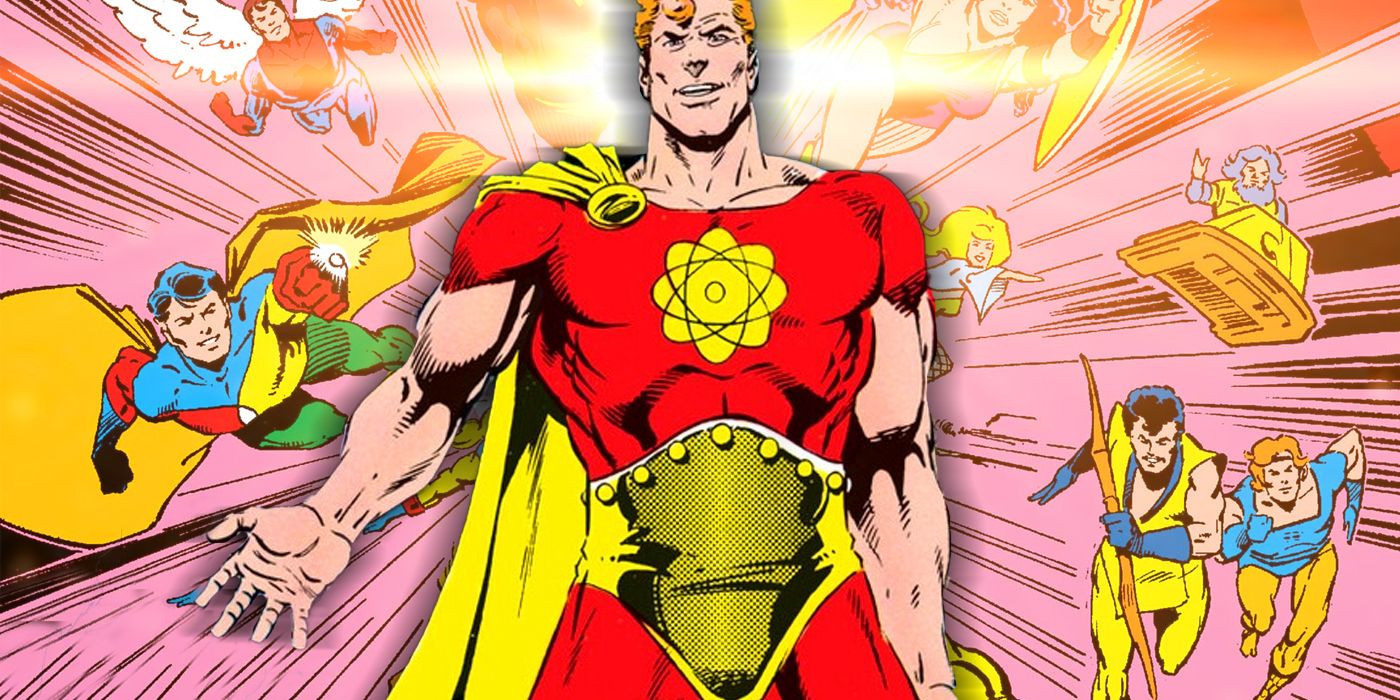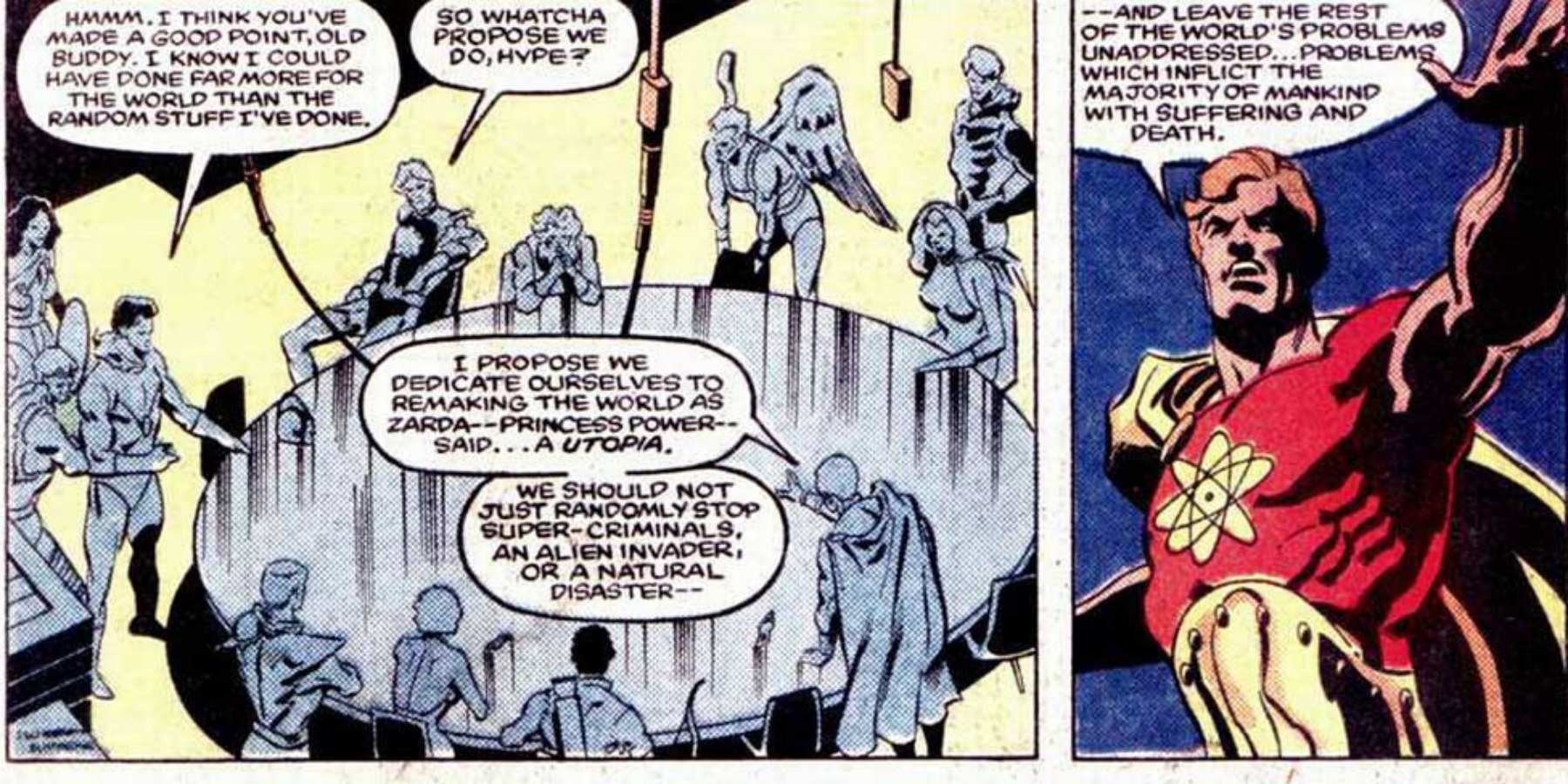The 1980s were an experimental time in superhero comics, with books like Watchmen and The Dark Knight Returns taking morally clear-cut superhero stories and asking hard questions about justice, power and what it actually meant for people to dress up in costumes and set out to fight evil. Before either of those groundbreaking works, there was another series that took the concept of the superhero and tried to apply it to a more realistic world, illustrating that even the most noble of intentions can pave the road to hell. That series was Marvel's Squadron Supreme.
The Squadron Supreme had its roots in the Squadron Sinister, a group of villains from a parallel universe who made their debut in 1969's Avengers #70, as a thinly-veiled homage to the Justice League of America. Roy Thomas would later introduce a heroic version of the Squadron in the pages of Avengers #85-86, which Thomas co-created with artist John Buscema.
The team would make guest appearances in various Marvel titles, sometimes as allies, but often as opponents of the Marvel heroes: They'd often fall prey to mind control and end up fighting. Enter Mark Gruenwald, longtime Marvel writer who also happened to be a massive fan of the Justice League. Gruenwald proposed a 12-part series that would focus on the Squadron Supreme -- and the result was one of the true groundbreaking titles of the 1980s.
Written by Gruenwald and illustrated by John Buscema, Bob Hall, Paul Ryan and Paul Neary, Squadron Supreme finds the Squadron's Earth recovering from a global calamity. The heroes do their best to help, but the world's infrastructure has been devastated and even the Earth's greatest heroes are left scrambling.
In a bold move, Squadron leader Hyperion suggests the team take this opportunity to do what they've tried in the past: To make the world a better place, a utopia for all by solving the world's problems. The majority of the team agrees, with a notable exception being Nighthawk -- who believes a utopia simply given to a humanity that hasn't earned it, doesn't have real meaning.
Nevertheless, the team moves forward with the Utopia Program, which intends to eliminate violence, crime and even death itself. Eliminating violence means removing all firearms in both military and civilian sectors; eliminating crime takes the form of a powerful "behavior modification" device that allows the Squadron to remove all criminal impulses from a person's mind and rewrite their personality into that of a positive, contributing member of society; and eliminating death means cryogenically freezing the terminally ill until such time as their afflictions can be cured.
The behavior modification device seems like a great way to deal with criminals in the most humane manner possible, but when Lady Lark attempts to break up with her teammate Golden Archer to retire from superheroics and focus on her music, he uses the device to brainwash her into loving him completely and totally. Over time, the guilt of what he's done makes him break off the relationship, but Lady Lark is heartbroken, still conditioned by the device to love Archer without reservation.
The Whizzer is as on board as the rest of the team to rid the world of guns, until his family is captured by a group of the Squadron's enemies and his first move is to grab a confiscated assault rifle -- which is obviously gone. Squadron Supreme never shies away from illustrating that while the heroes of the Squadron's Earth are well-intentioned, they're not without (sometimes serious) flaws.
The series builds to an explosive finale, as Nighthawk assembles a team of rebels to battle the Squadron's benevolent tyranny. It's a forerunner of books like Kingdom Come and Civil War, but with more bite, as the characters' status as heroes of a parallel Earth means there's no plot armor for either side.
Squadron Supreme was the first comics series to take superheroes out of the brightly colored world of Good Guys and Bad Guys and into a gray area where heroes were more people than paragons. It's an overlooked classic that's as relevant today as it was in 1985.


